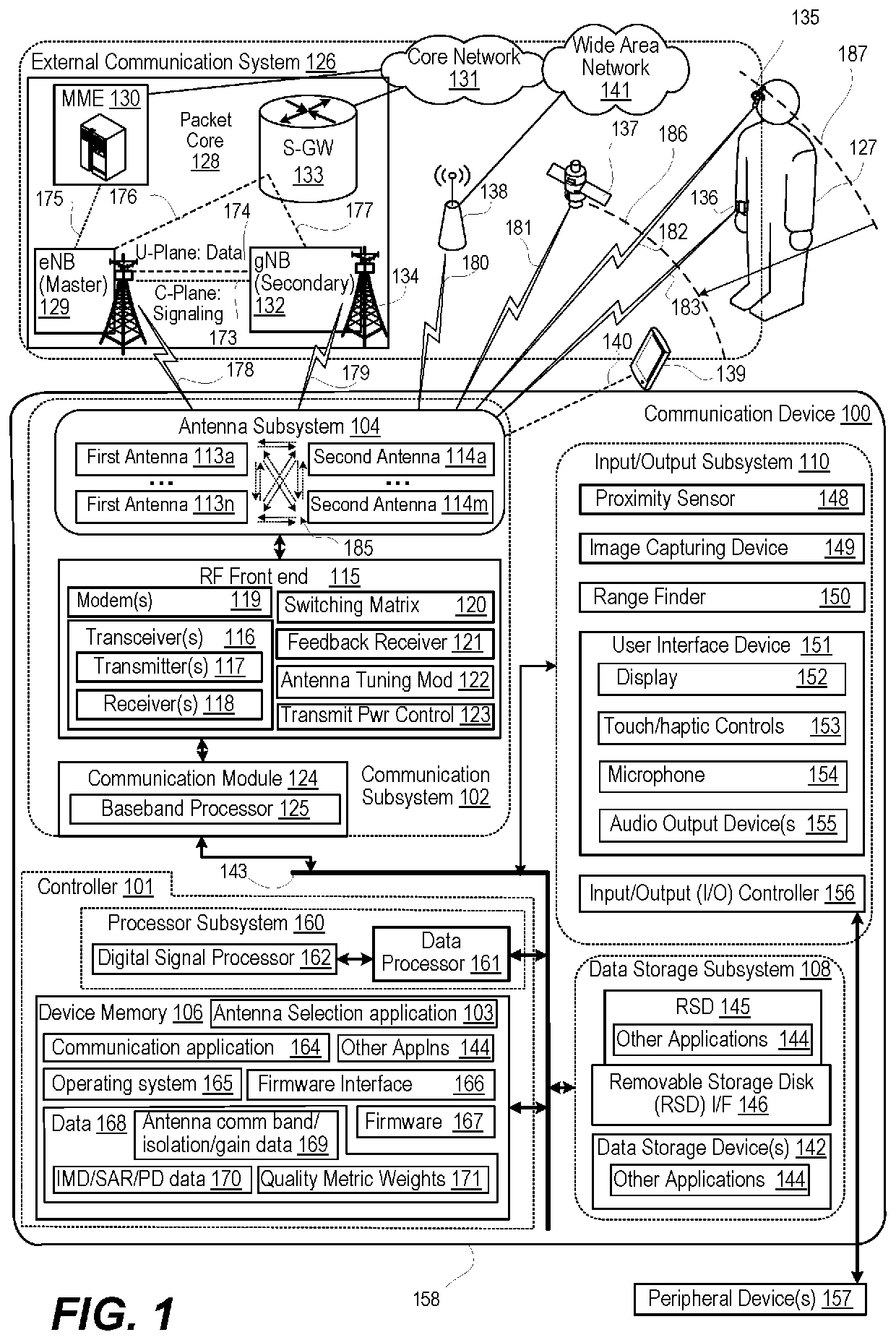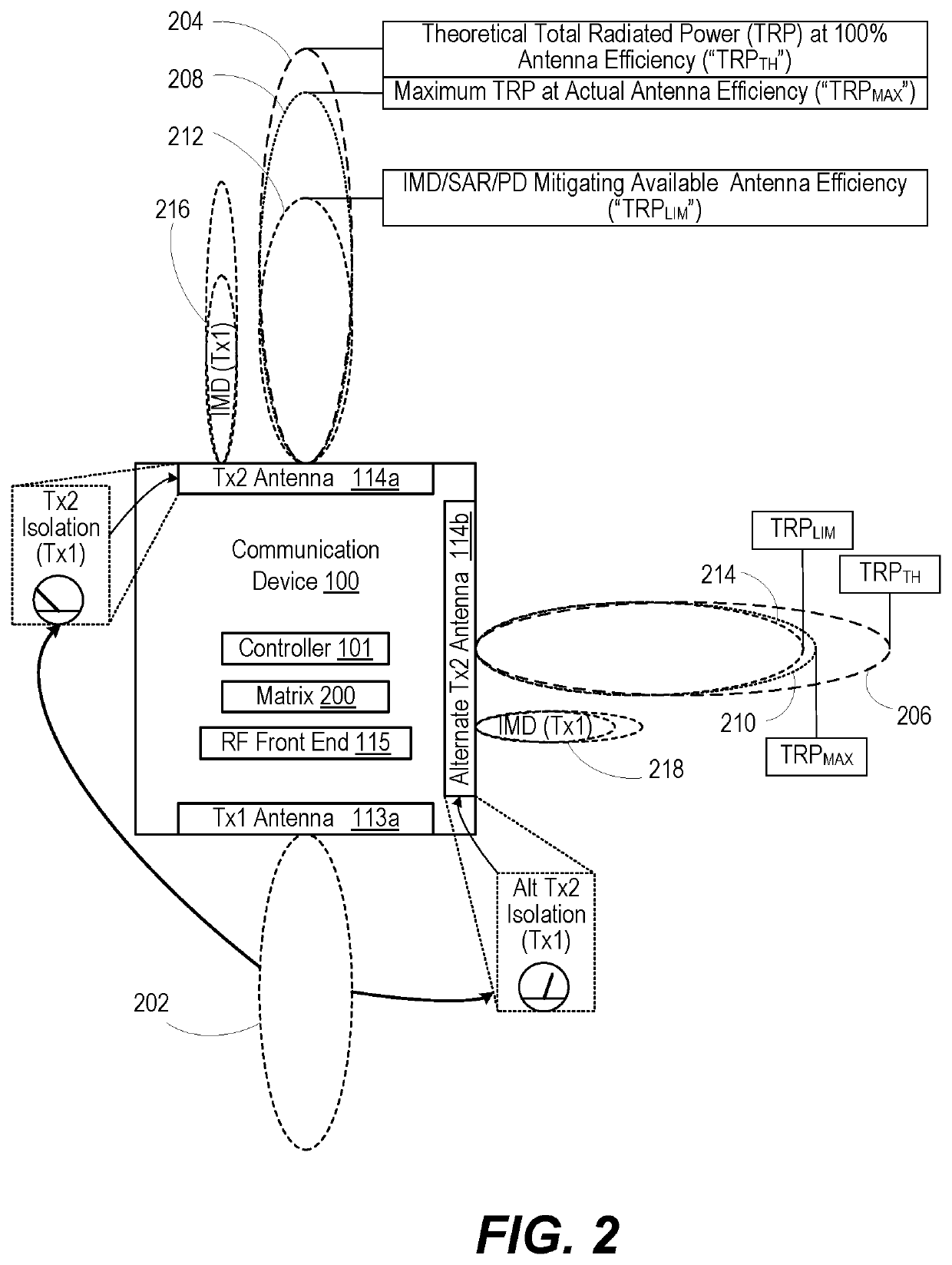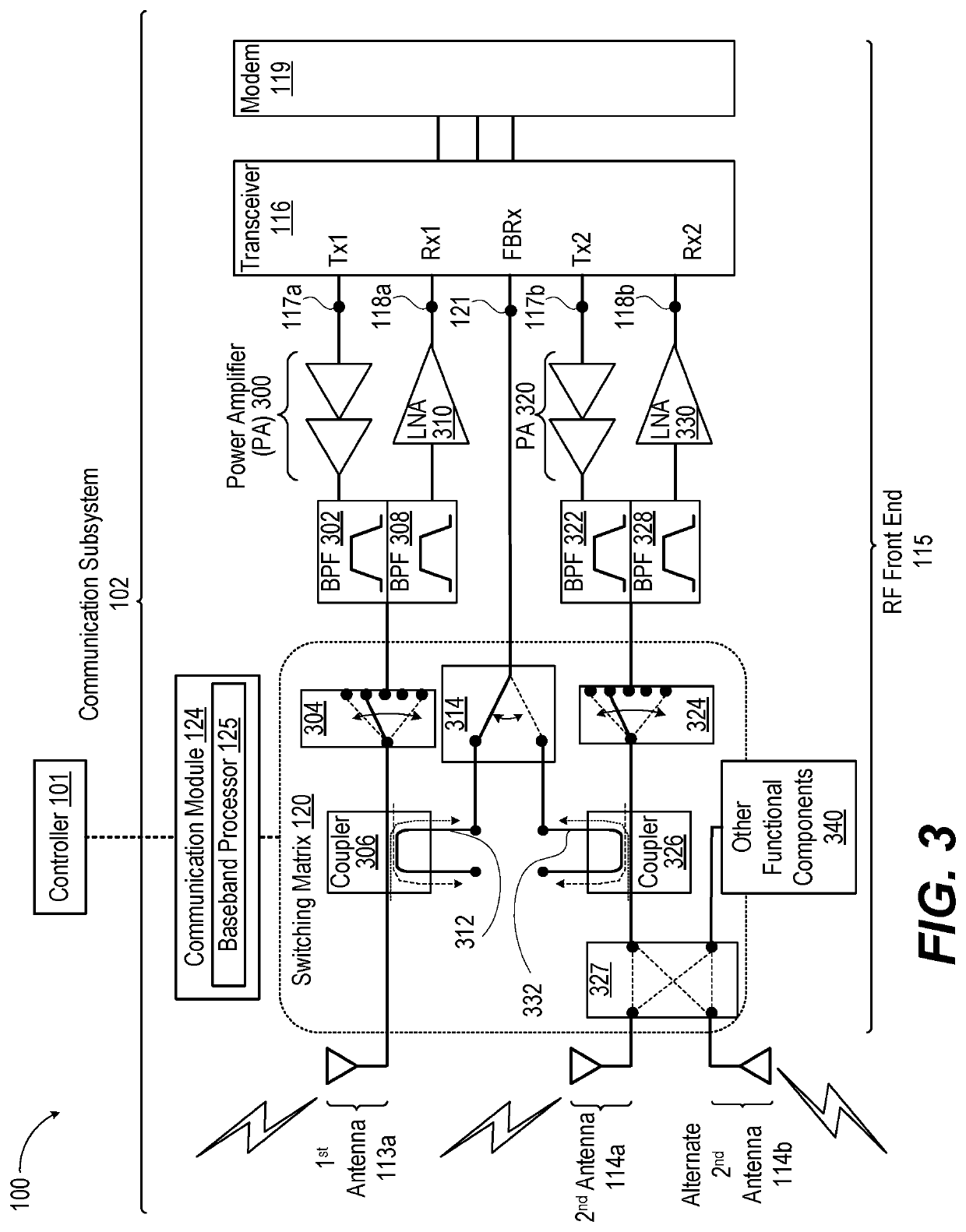Method for antenna selection for concurrent independent transmissions via multiple antennas
a technology of independent transmission and antenna selection, applied in the direction of antennas, antenna details, basic electric elements, etc., can solve the problems of reducing the range and/or throughput on the transmission path, spurious emissions levels above, and affecting the overall data transfer throughpu
- Summary
- Abstract
- Description
- Claims
- Application Information
AI Technical Summary
Benefits of technology
Problems solved by technology
Method used
Image
Examples
Embodiment Construction
[0010]According to aspects of the present disclosure, a communication device, method, and computer program product provide for antenna selection that optimizes performance by multiple transmitters. In one or more embodiments, the communication device includes a first transmitter that transmits at a first frequency. The communication device includes a first antenna electrically coupled to the first transmitter. The first antenna radiates a first transmit signal at a first total radiated power (TRP). A second transmitter of the communication device generates a second transmit signal at a second frequency. The second antenna has a second antenna efficiency rating (gain) at the second transmit frequency that yields a second TRP. The second antenna has a first antenna isolation level transmitting at the second transmit frequency to the first antenna transmitting at the first frequency The communication device includes at least one alternate second antenna, each having an alternate second...
PUM
 Login to View More
Login to View More Abstract
Description
Claims
Application Information
 Login to View More
Login to View More - R&D
- Intellectual Property
- Life Sciences
- Materials
- Tech Scout
- Unparalleled Data Quality
- Higher Quality Content
- 60% Fewer Hallucinations
Browse by: Latest US Patents, China's latest patents, Technical Efficacy Thesaurus, Application Domain, Technology Topic, Popular Technical Reports.
© 2025 PatSnap. All rights reserved.Legal|Privacy policy|Modern Slavery Act Transparency Statement|Sitemap|About US| Contact US: help@patsnap.com



